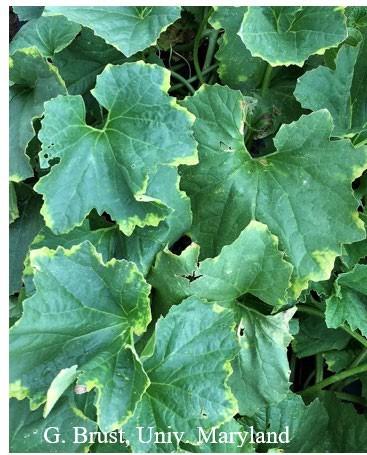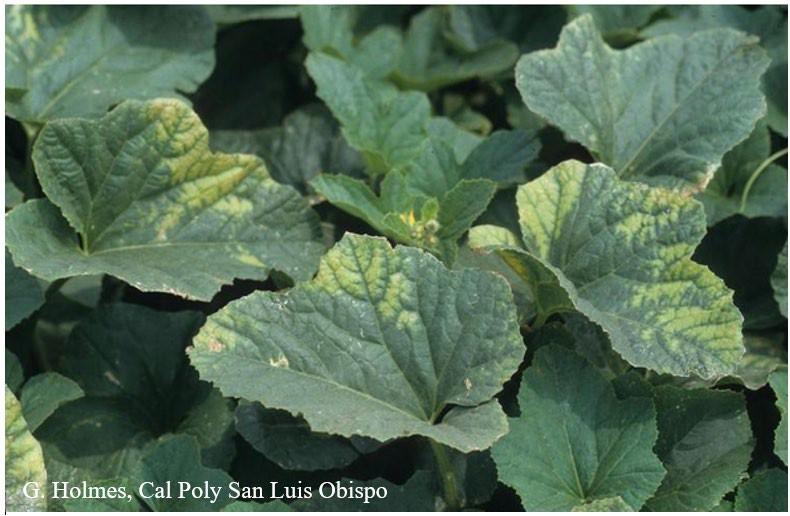Yellowing of Cantaloupe Leaf Edges

I have been seeing and receiving a few samples of yellowing (chlorosis) around the margins of cantaloupe leaves (Fig. 1). The marginal chlorosis observed in figure one would indicate salt burn, which is a noninfectious problem that mostly affects cantaloupes. This yellowing at the leaf margin is likely the result of guttation, which is how plants exude water at the margin of the leaf. Water droplets from the plant accumulate at the edge of a leaf in the early morning. This water often contains organic and inorganic compounds, and mineral nutrients, especially potassium. As the water evaporates these compounds are left behind and concentrated at the leaf margin. Over time the high concentration of compounds shows up as a marginal yellowing called ‘salt burn’.
These deposits also can have a toxic effect on the gas exchange pores (the hydathodes) located at the leaf edges. Salt accumulation often is associated with foliar applications of nutrient solutions or pesticides during very hot, dry weather. Frequent copper applications when it is hot and dry also can result in distinct bands of yellow tissue with veins remaining green around leaf margins (Fig. 2). Soil applied urea or ammonium nitrate fertilizers may contribute to the problem as well. In most cases there is no yield loss as a result of these symptoms and no control measures are needed; however there could be yield losses if salt burn is severe and widespread in the field.

Return to Horticulture and Disease Topics
This article appears on August 19, 2021, Volume 12, Issue 5 of the Vegetable and Fruit News
Vegetable and Fruit News, August 2021, Vol. 12, Issue 5
Vegetable and Fruit News is a statewide publication for the commercial vegetable and fruit industries and is published monthly during the growing season (April through October). Subscribers will receive an email with the latest edition.
Subscribe